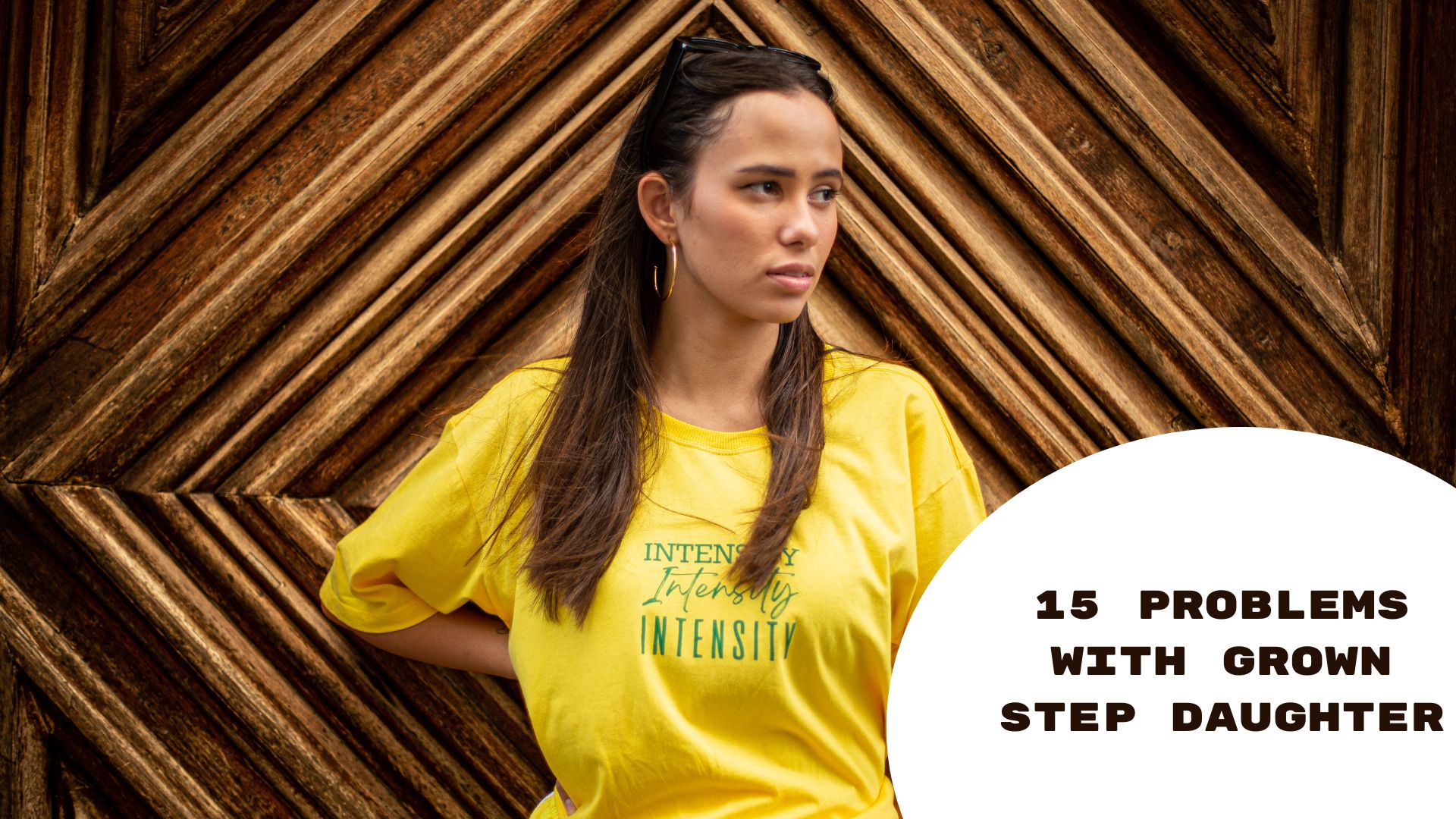Having a stepdaughter can bring joy, love, and fulfillment to a blended family dynamic. However, navigating the complexities of a relationship with a grown stepdaughter can also present its fair share of challenges.
Building a strong bond with her requires patience, understanding, and open communication.
In this article, we will explore 15 problems with a grown step daughter and provide practical ways to address these issues.
15 Problems With Grown Step Daughter And Ways To Deal With It
Dealing with the challenges that come with a grown stepdaughter requires empathy, understanding, and consistent effort.
By fostering open communication, building trust, and addressing issues as they arise, you can create a loving and harmonious blended family.
We will look at 15 problems with grown step daughter and ways to deal with it in this article.
1. Differences in Parenting Styles
One of the initial obstacles when blending families is the differing parenting styles between biological parents and stepparents.
To overcome this challenge, open and respectful communication between all parties is essential.
Engage in discussions about expectations, boundaries, and disciplinary approaches to find common ground and create a cohesive parenting strategy.
2. Establishing Trust
Trust is the foundation of any relationship. In the case of a grown stepdaughter, building trust might take time and patience.
Show genuine interest in her life, actively listen, and respect her boundaries. Consistency, reliability, and following through on promises will help establish trust gradually.
3. Resentment Or Loyalty Issues
A grown stepdaughter may experience conflicting emotions due to loyalty to her biological parent and the presence of a new stepparent.
Acknowledge her feelings and assure her that your intention is to support her happiness and well-being.
Encourage open discussions about any resentment or loyalty issues, allowing her to express her emotions without judgment.
4. Communication Breakdowns
Effective communication is crucial for resolving conflicts and maintaining healthy relationships.
Encourage open dialogue and active listening by creating a safe space for discussions. Choose neutral settings, use “I” statements to express concerns, and seek understanding rather than focusing on blame.
5. Dealing With Jealousy
Jealousy can arise when attention and affection are divided among family members. Acknowledge and validate your stepdaughter’s emotions while emphasizing that love is not a finite resource.
Engage in activities that strengthen your bond and reassure her that your love for her is unwavering.
6. Emotional Distance
A grown stepdaughter may display emotional distance due to past experiences or a fear of getting hurt.
Build a connection by showing empathy, kindness, and patience. Engage in activities that allow for shared experiences and create opportunities for emotional closeness.
7. Handling Boundaries
Establishing and respecting boundaries is vital in any relationship.
Involve your stepdaughter in setting boundaries that work for both parties, ensuring mutual respect and understanding. Be willing to adjust boundaries as the relationship evolves.
8. Dealing with Past Baggage
A grown stepdaughter may carry emotional baggage from previous family dynamics or relationships.
Encourage her to seek therapy or counseling if needed, offering support and understanding. Patience and compassion are crucial while she processes and heals from any past traumas.
9.Addressing Discipline
Navigating discipline can be challenging for stepparents. Establish clear expectations and consequences together with your spouse and stepdaughter.
Strive for consistency in discipline and avoid favoritism, ensuring fairness and understanding for all family members.
10. Blended Family Dynamics
Understanding and accepting the complexities of blended family dynamics is key to fostering harmony.
Create opportunities for bonding through family activities, rituals, and traditions. Encourage open conversations about each family member’s role and contributions to building a loving and inclusive environment.
11.Overcoming the “Evil Stepmother” Stereotype
Stepmothers often face unfair stereotypes. Challenge these preconceived notions by actively dispelling negative assumptions through genuine care, respect, and support.
Demonstrate your love and commitment to your stepdaughter consistently, proving that the stereotype does not define your relationship.
12. Dealing with Sibling Rivalry
Sibling rivalry can intensify in blended families. Encourage healthy competition and cooperation by creating an environment that fosters mutual respect and support.
Celebrate each child’s individuality while promoting a sense of unity and togetherness.
13. Fostering Quality Time
Allocate dedicated quality time for one-on-one activities with your stepdaughter. Engage in shared interests, hobbies, or outings to strengthen your bond. This focused attention will help create lasting memories and deepen your connection.
14. Patience and Persistence
Building a strong relationship with a grown stepdaughter requires patience and persistence. Understand that progress may be gradual and setbacks are normal. Stay committed to the process and continue to invest time and effort into the relationship.
15. Seeking Professional Help
In some cases, seeking professional help from family therapists or counselors can be beneficial.
They can provide guidance and support in navigating the complexities of a blended family and help address specific challenges.
How To Deal With A Disrespecting Step Child And Ways To Deal With It
Building a harmonious relationship with a stepchild can sometimes be challenging, especially when faced with disrespectful behavior.
However, it is crucial to address this issue promptly and effectively to maintain a healthy and loving family dynamic.
We will explore how to deal with a disrespecting stepchild and provide practical strategies to address the problem while fostering mutual respect and understanding.
1. Remain Calm and Objective
When confronted with disrespectful behavior from a stepchild, it is essential to remain calm and composed.
Reacting impulsively or emotionally can escalate the situation further. Take a step back, evaluate the situation objectively, and approach it with a level-headed mindset.
2. Understand the Underlying Causes
Disrespectful behavior can stem from various underlying causes, such as adjustment issues, loyalty conflicts, or past experiences.
Try to understand the root cause of the disrespectful behavior by engaging in open and honest conversations. Listen attentively and show empathy towards your stepchild’s perspective.
3. Set Clear Expectations and Boundaries
Establishing clear expectations and boundaries is crucial in any parent-child relationship. Communicate your expectations regarding respectful behavior, both within the family and towards others.
Collaborate with your spouse to set consistent rules and consequences, ensuring they are fair and age-appropriate.
4. Lead by Example
Children learn by observing their parents and role models. Model respectful behavior in your interactions with others, including your stepchild.
Display empathy, kindness, and patience, even in challenging situations. Your actions will serve as a powerful example for your stepchild to follow.
5. Communicate Openly and Respectfully
Effective communication is vital in addressing disrespectful behavior. Engage in open and honest conversations with your stepchild, expressing how their behavior affects you and the family.
Use “I” statements to express your feelings rather than blaming or criticizing. Encourage your stepchild to express their thoughts and feelings as well.
Things a Step-Parent Should Never Do
As a step-parent, it’s important to approach your role with sensitivity and respect. Building a positive relationship with your stepchildren takes time, patience, and understanding.
While every family dynamic is unique, here are some general guidelines on things a step-parent should avoid doing:
- Overstep boundaries: Respect the existing parent-child relationship. Avoid making decisions or enforcing rules that are solely within the biological parent’s domain, unless you’ve discussed and agreed upon them together.
- Badmouth the other parent: It’s crucial to refrain from speaking negatively about the other biological parent, regardless of your personal feelings.
Children may feel torn and become distressed if they witness conflict or hear negative comments about their other parent.
- Try to replace the biological parent: Recognize that you have a different role in the child’s life.
Avoid attempting to replace their biological parent, as it can cause confusion and resistance. Instead, focus on developing your own unique bond with the child.
- Show favoritism: Treat all the children in the family fairly and equally. Avoid favoritism or making comparisons between stepchildren and biological children. Ensure that everyone feels valued and included.
- Rush the relationship: Building trust and a strong relationship takes time. Avoid rushing the process or expecting immediate closeness. Allow the child to set the pace and gradually develop trust and rapport with you.
- Neglect communication: Open and honest communication is essential. Avoid keeping important information or decisions from the child’s biological parent or excluding them from discussions concerning the child’s well-being.
Struggling With Step-Parenting
Step-parenting can be a challenging role that comes with its own set of unique complexities.
It’s common to experience struggles and difficulties as you navigate your relationship with your stepchild. Here are some suggestions to help you cope with the challenges of step-parenting:
- Be patient: Building a bond with your stepchild takes time and patience. Recognize that it’s a process that may have ups and downs. Allow the relationship to develop naturally without putting pressure on yourself or the child.
- Communicate openly: Effective communication is crucial in any relationship, including step-parenting. Create a safe space for open and honest conversations with your stepchild. Listen actively, validate their feelings, and express your own thoughts and concerns.
- Respect boundaries: Understand and respect the boundaries of your stepchild. Recognize that they may need time and space to adjust to the new family dynamics. Avoid rushing the relationship or pushing for closeness before they are ready.
- Support the biological parent: Work as a team with your spouse or partner, the child’s biological parent. Maintain open lines of communication, discuss parenting decisions together, and present a united front to the child. Supporting the biological parent helps establish stability and consistency for the child.
- Seek professional help if needed: If you find yourself struggling significantly with step-parenting, don’t hesitate to seek professional support. A family therapist or counselor can provide guidance, help you navigate challenges, and offer strategies to strengthen your relationship with your stepchild.
Conclusion
Navigating the complexities of a relationship with an adult stepdaughter requires patience, understanding, and effective communication.
Being present, showing genuine interest, and providing a safe and nurturing environment allows the stepdaughter to feel valued and appreciated.
By actively addressing these typical issues and implementing practical solutions, we can cultivate a thriving and fulfilling relationship with our adult stepdaughters.
Remember, building strong relationships takes time, effort, and a genuine desire to create a loving and supportive family unit.







